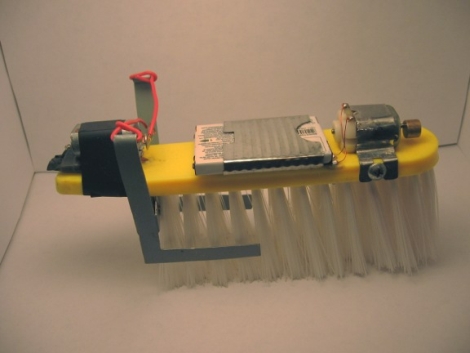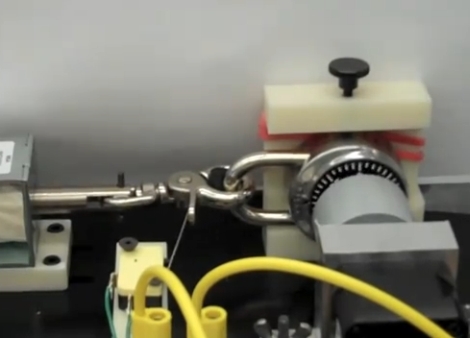
[Underling] sent in his bristlebot project that aims to put a new spin on controlling bristlebot movement. We have seen several attempts at bristlebot directional control in the past, but none of these methods really fit what he wanted to do. His goal was to use a single brush rather than two, and be able to aim the bot in any direction at will.
He tried several different designs, but settled on what you see in the picture above. The large brush head is fitted with a vibrating motor on the front as well as a cell phone battery near the midsection. These pieces are placed in the center plane of the brush as to not influence the direction of movement. A separate servo-like motor is placed on the back of the brush, and each side of the motor’s arm is attached to a paddle that extends down the sides of the brush. When the motor is activated, one paddle is pressed in towards the bristles, while the other paddle is pulled away. This causes an immediate shift in direction, and should provide for a relatively tight turn radius. It should be noted that he also took the time to remove bristles from the center of the brush where the steering paddles are located in order to improve turning performance.
Unfortunately [Underling] does not currently have a video camera with which to show off his work, but we hope to see some action footage in the near future.
















